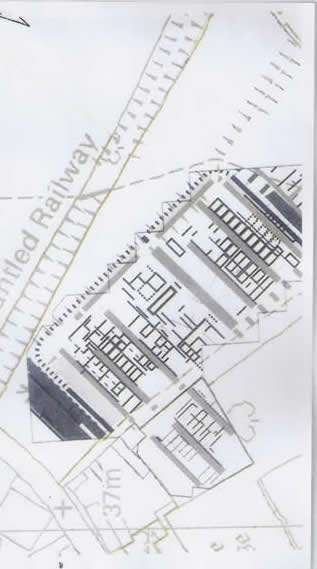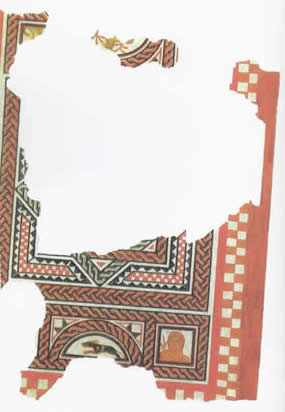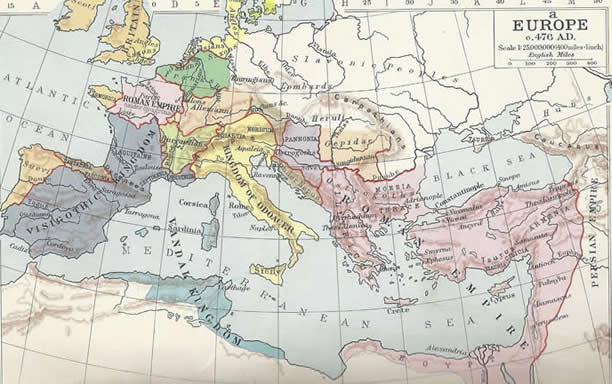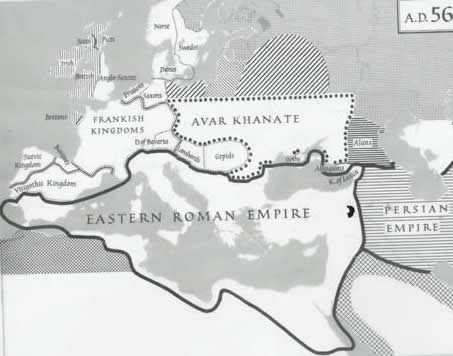Click here to return to Roman Civilisation menu
Click here for main Classics menu
If you have enjoyed reading these notes, please click here and visit the site of Paul Andrews' novel, "The Loner"
Roman Cities and Towns.
These were laid out on a grid pattern around a central market square (The Forum), which would have been surrounded by shops, temples, and municipal buildings.
There may have been an arena for gladiatorial and circus shows outside the town
.
Every city would have two mayors (the "duoviri") who shared
office, and also two weights and measures officers. These were directly elected. When they retired from office, these elected officials were enrolled onto the Council of "decurions". There were no direct elections to this body.
The settlement outside the Derventio fort may have had a town council like this.
Elections were free, but political parties were not allowed by
the emperors, the ballot was not secret, and the system used was biased in favour of richer citizens.
Malton
The first Roman invasion of Britain was by Julius Caesar in 54BC It failed.
The Romans invaded again in 43AD and this time they were successful, but the Romans did not
reach York until 71 AD, and the first fort at Derventio was built not long afterwards.
The footprint of The Derventio fort is big by Roman standards. It may have been an important staging post for troops marching to and from Hadrian's Wall. In Roman times the Derwent may have
been navigable as far as Malton. The fort was also strategically placed to control the crossing of the river.
At nearby Cambeck, there was a factory where high quality earthenware pottery goods were mass-produced
for sale all over Britain and also for export to the continent. Examples of this turn up regularly in local archaeological digs.
The OS map of Roman Britain shows cross-roads at or near where Butchers Corner is now, which
would have been important for local trade. A civil settlement grew up outside the Roman fort, down
by the river, and there is an abundance of Roman graves and factories at Norton, and evidence of
some shops there.
If no archaeological evidence of Roman occupation has been found at Malton itself, it can still be
said that the town is laid out in a way which makes it possible to imagine life in Roman Derventio.
The main square of Malton is called "Market Place", where one might imagine a Roman "forum". Perhaps one might imagine a pagan temple where the church is now. Market Place is surrounded by
shops, and the old town hall is also there. This is the kind of layout one would have expected to find
in a Roman town.
Some of the roads that lead off Market Place, particularly on the Eastern side (eg oF Saville St.
Newgate, Finkle Street etc.), are straight and could follow a grid pattern, which the Romans would
have recognised.
So, if one imagines Derventio as being a town like Malton is today, it is not difficult to imagine a
bustling market town in the second century, with traders from all over the area, selling woollen
goods from the Pennines, fresh fish from the Derwent, salted fish from the East coast (Scarborough,
Filey and Bridlington are at the end of Roman roads), as well as meat and local produce, and of
course, "Crambeckware"; the crossroads and the bridge over the Derwent, guarded by the fort;
worshippers at the temple making burnt offerings to the gods; off-duty soldiers chatting to the locals, and perhaps a meeting of the decurions in the local"basilica" (as the town hall would have been called).
Somewhere, as yet undiscovered, there would have been the public bath-house, a good place for listening to the latest gossip - or perhaps local people were allowed to share the facilities in the fort.
And, if we roll time forward, who knows? Perhaps in May 410, with the fort unoccupied, and
rumours of attacks by German pirates on the coast, there may have been an election for the duoviri
for the next year!
Malton Museum has unfortunately been closed by Ryedale District Council, as a consequence of government economies. Further information is available on the museum website.

Plan of excavations of Derventio fort (now backfilled) showing the remaining earthen ramparts, and the foundations of the buildings uncovered

Mosaic floor uncovered from a Roman hiouse between the fort and the river

Wall frescoes recovered from the same house
The End of Roman Britain
At the start of the fifth century, the empire was invaded by the Goths. At about this time, the Roman army in Britain revolted and its commander (Constantine Ill) attempted to
seize the Empire. He took the legions from Britain and got control of Gaul (now France) and Spain. Unfortunately he had overstretched himself, and was eventually defeated.
The
leaders of Roman Britain then petitioned the emperor,
Honorius, to send troops to save the province from pirates and invasion by the barbarians in the North.
By this time the Empire was on its knees and Honorius was in no position to send troops to Britain. So in 410 AD he ordered the British cities and tribal areas to take care of their own
defence.
From then until today (the Roman Festival of 2010!), no Roman soldiers have been seen in Malton!
This did not mean the end of Roman Britain. Roman life
continued very much as before in the cities. Some British chieftains became kings and fought the pirates. One of them,
Vortigern, employed pirates led by Hengist and Horsa as
mercenaries, but they turned against him and set up their own kingdom, and invited their own tribes, the Angles and
Saxons to settle and conquer the land.
St. Patrick (387 - 461 AD)
Born near Dumbarton in Scotland (other places claim his birth), Patrick was a Roman.
He
was taken to Ireland by pirates, and escaped home in about
407, when there was still a Roman administration in Britain.
He studied under Bishop Germanus of Auxerre, and returned to Ireland in 433AD, where he lived for the rest of his life.
The story of St. Patrick's life gives an idea of life in Britain in the period before and after the Roman military evacuation. This was a wealthy young man who was able to get educated in France and then go West and convert the Irish. There were
pirates and outlaws, but civilised life and law and order had 'not completely broken down, and it was still possible to travel long distances in relative safety.

Europe and the Middle East at about 420AD, during the life of St. Patrick
The Legend of King Arthur.
The Saxon conquest took almost two centuries to complete, and they never conquered
Wales.
Arthur was a Briton who fought and defeated the Saxons. His final victory at Mount Baden (nobody knows for sure where this is) resulted in peace between Saxons and Britons which
lasted fifty years.
There are many theories about Arthur and only a few facts are known. Consider this theory:
The legend of the Knights of the Round Table suggests an army of horsemen. The round table, where all of the knights (including Arthur) sat and ate all their meals as equals,
suggests a republican rather than a hereditary monarch.
At about the same time as Arthur's wars, the Eastern Roman Empire (which was still intact)
made an attempt to recover the lost provinces in the West. They trained a highly skilled cavalry army, and with this they succeeded in reoccupying Italy, North Africa and the South
of Spain.
Could it be that the cities of Britain sent another request for help to the imperial court at
Constantinople, and Arthur was sent to save Britain from the Saxons? The Saxons generally
fought on foot and would not have been able to withstand a trained, highly skilled and highly disciplined Roman cavalry army.
One of Arthur's battles is supposed to have taken place near York. So perhaps we might imagine a visit by Arthur and his knights to Derventio, and the grateful Romano-British townspeople glad of their deliverance from Saxon invaders. Who knows? Could Arthur's
men have stopped and camped for a week or two inside the old ruined fort?
The date normally given for the end of Roman Britain is the time when the fifty years of
peace brought about by Arthur ended. This is not known for certain, but is thought to have
been some time between 550 and 600 AD.

Map showing the Mediteranean world at 476 AD, the date when the Roman Empire in the West officially ended

Europe and the Near East at about 560AD, after the East Roman reconquests, which were in progress at about Arthur's time. Was Arthur part of the Roman fight-back?
Click here to return to Roman Civilisation menu
Click here for main Classics menu
If you have enjoyed reading these notes, please click here and visit the site of Paul Andrews' novel, "The Loner"
|





